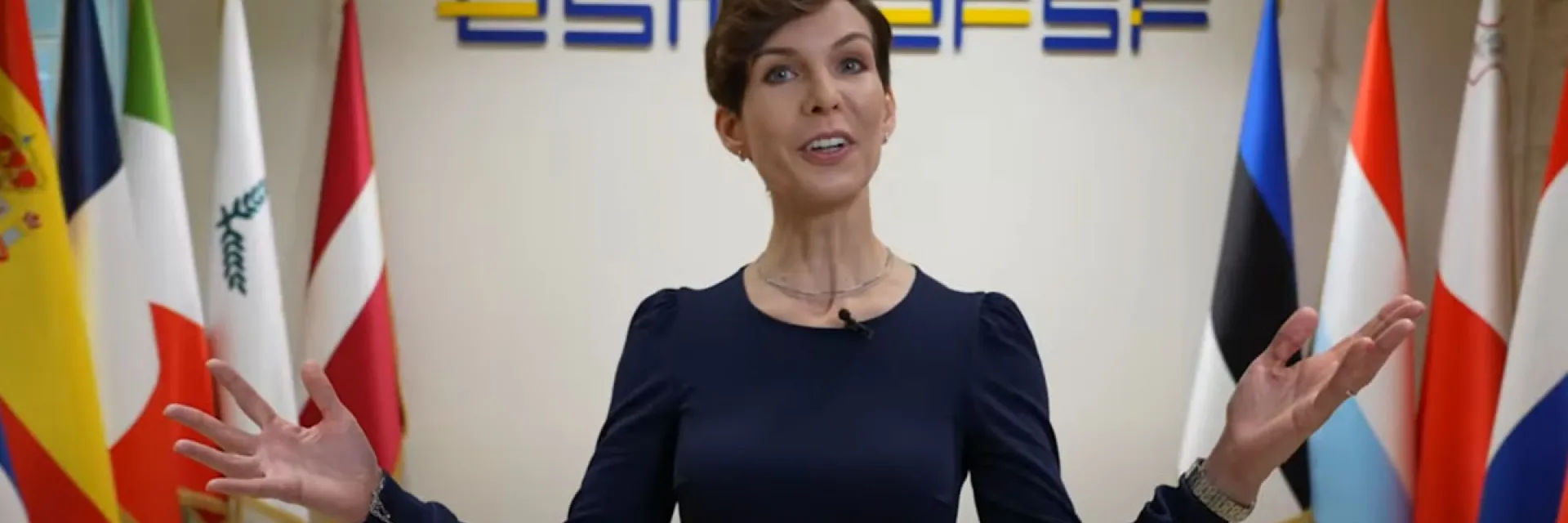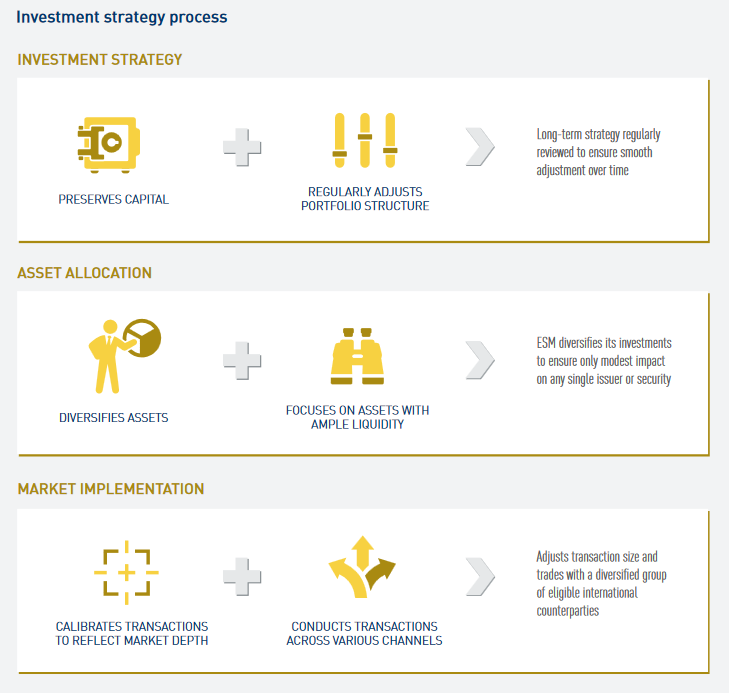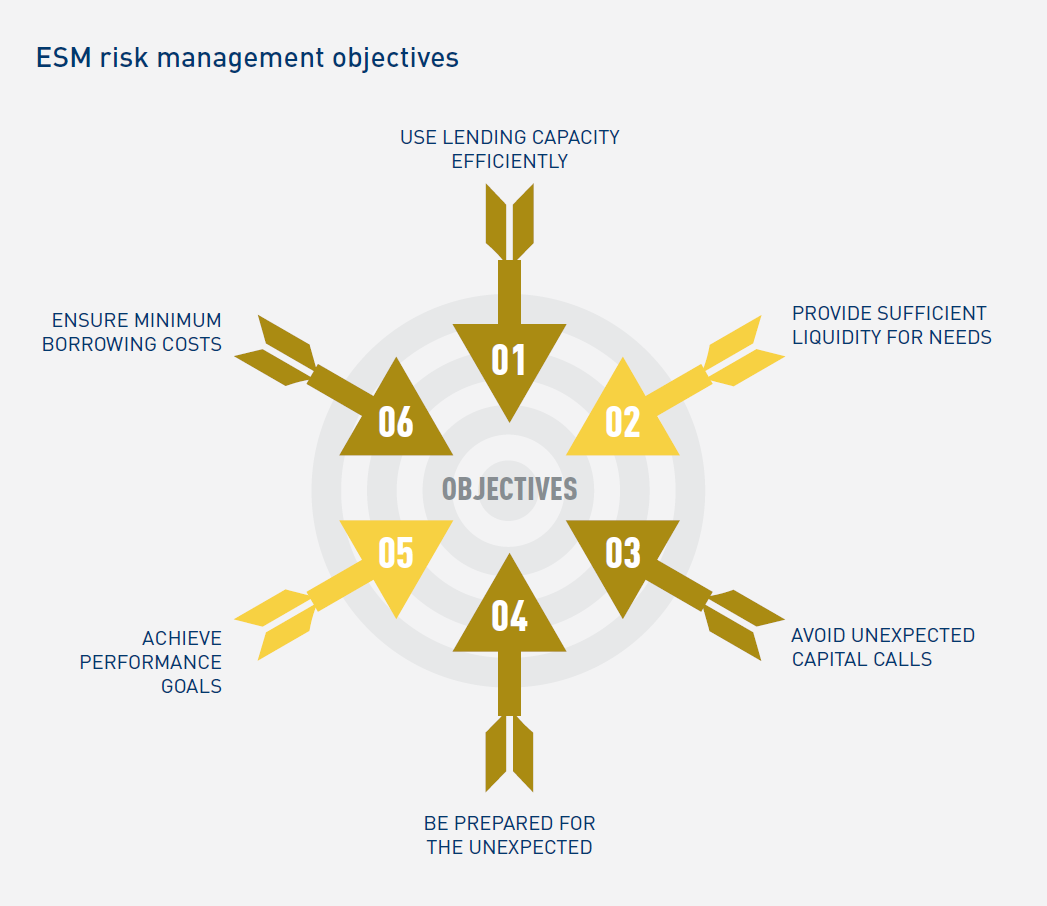
How we work
From funding to lending, see how ESM delivers on its mandate.
Overview
As an institution created by euro area countries, the ESM works very closely with its Members. Each country is represented in the Board of Governors – the ESM’s highest decision-making body – by its minister of finance. The Board’s most important decisions require unanimous agreement, including decisions to lend funds to an ESM Member.
Between 2011 and 2018, the ESM and EFSF provided nearly €300 billion in loans to five countries: Ireland, Portugal, Greece, Cyprus, and Spain. This did not cost taxpayers any money, because the funds were raised in financial markets. The ESM does this by selling bonds and bills to investors all over the world. Even after the conclusion of all the financial assistance programmes, the ESM and EFSF continue their issuance activities. This is because bonds need to be refinanced, as their maturity is generally shorter than the maturity of ESM/EFSF loans. From our trading room, the funding team keeps a close eye on the market to decide on the next issuance. For 2023, the EFSF plans to raise €20 billion and the ESM €8 billion in bonds from investors.
Following the completion of ESM/EFSF financial assistance programmes, post-programme surveillance (PPS) has been carried out by the European Commission in liaison with the European Central Bank. The procedure involves review missions in the programme country to assess its economic, fiscal, and financial situation. The ESM participates in the bi-annual PPS missions to fulfil the requirements of its Early Warning System, i.e. to assess a country’s capacity to repay its outstanding loans.
The ESM also manages its own capital of €80.5 billion. This money has been paid in by the euro zone countries. It cannot be used to grant loans. Paid-in capital serves as a guarantee for bonds issued by the ESM, and our portfolio managers prudently invest the capital to protect its value. They work under very strict guidelines and can only buy the safest instruments.
Thanks to these guarantees, the ESM has a strong credit rating and can raise money at very favourable rates. These low funding costs are passed on to our programme countries. As a result, the programme countries realise substantial budget savings.
Despite its large balance sheet of over €900 billion, the ESM only employs around 220 people. As the ESM was established under an intergovernmental treaty, it is formally not an EU institution. Therefore, it can recruit employees from countries all over the world. Currently, we employ staff from around 50 different nationalities.
Investment and Treasury
The ESM manages, prudently and conservatively, the capital paid in by the euro area Member States. The paid-in capital contributes to ensuring the institution's creditworthiness, an essential factor supporting the ESM's capacity to borrow on financial markets at favourable rates.

How the ESM manages its investment portfolios in a decreased liquidity environment:
Falling liquidity in European fixed income markets has raised concerns as it tends to reduce the size of trades that can be conducted without affecting market prices. For the ESM to have only a limited impact on market prices, a requirement stipulated in the ESM’s Guideline on Investment Policy, the ESM has defined a special operational framework that covers all aspects of the investment process. It is based on three dimensions that drill down from an overarching strategy to daily portfolio monitoring and adjustment. First, it has a long-term investment strategy that does not require large-scale portfolio purchases and sales. Second, it diversifies assets, focusing on those with sufficient liquidity to reduce the impact of trades on any single issuer or security. Finally, it conducts transactions and calibrates them so that they can be absorbed, without difficulty, by market participants.
ESM’s long-term investment strategy avoids large-scale portfolio rebalancing
- ESM investment strategy focuses on long-term capital preservation.
The core structure of the portfolio remains relatively stable over time, as it is constructed to respect the ESM’s long-term capital preservation objective. In practice, the paid-in capital, which is divided into a short-term tranche (mainly invested up to 3-years maturity) and a medium-long-term tranche (mainly invested up to 10-years maturity), has a capital preservation objective of one and three years, respectively.
- ESM reviews investment strategy regularly to ensure smooth adjustment over time.
As a result of the long-term investment objective, adjustments to portfolio risk parameters are implemented progressively to reflect changes in market conditions, such as yield spreads, spread levels, and interest rate volatility. The ESM Investment Management Committee, which oversees the implementation of the ESM Guideline on Investment Policy, discusses these adjustments on a monthly basis, in light of medium-term macroeconomic and financial developments.
Internal Control Framework
The ESM recognises the importance of internal controls. They provide reasonable assurance that the institution can deliver on its mandate, prevent losses, and prepare reliable financial statements free from material misstatements. In 2015, the ESM completed the establishment of a comprehensive system of internal controls, which complemented the existing internal controls over financial reporting put in place since the inception of the institution.
Detailed information on our Internal Control Framework
Risk Management
The ESM has defined clear risk management objectives and an established strategy to deliver them through appropriate governance and core risk management processes. The organisation’s approach to risk management derives from the ESM Treaty and the ‘High Level Risk Policy', which in summary are to:
- follow a prudent approach to risk-taking to limit potential losses, ensure continuity in fulfilling the ESM’s mandate and meeting its commitments, and avoid unexpected capital calls;
- maintain minimum capital requirements to ensure the highest creditworthiness;
- preserve the ESM’s funding and, hence, lending capacity.
The ESM applies elements of its risk management framework to all aspects of its mandate. Some risks are accepted as part of the ESM Mandate. The primary example is counterparty risk on financial assistance the ESM grants to Members. The ESM aims at fully covering its financing and operating costs but not at generating profit on such financial assistance. Equally, it does not provide incentives for speculative exposures of its investment portfolio.
Compliance and Ethics
We take compliance very seriously at the ESM. The ESM Compliance function promotes the highest ethical standards in line with international best practice, formulated in the ESM Code of Conduct. It ensures that they are followed by all staff whilst performing their professional activities at the ESM. The objectives of compliance management, its governance, responsibilities, and operation within the ESM are described in the Compliance Charter.
ESM Compliance Charter
ESM Compliance Notification (25/09/2023) (PDF, 138 KB)
EFSF Compliance Notification (25/09/2023) (PDF, 390 KB)
Policy on the Prevention of Money Laundering and Terrorism Financing [extract] (PDF, 109 KB)
Code of Conduct
The Board of Directors adopted a Code of Conduct for the Managing Director, members of staff and, to the extent applicable, Directors and alternate Directors. The Code of Conduct sets forth the rules on such matters as standard of conduct, confidentiality, public statements and contacts with the media, personal investments, and disclosure of financial and business interests.
ESM Code of Conduct (legal documents section) (PDF)
Reporting of misconduct
The ESM is committed to a culture of integrity, respect, accountability, and non-discrimination, and to fostering and maintaining a work environment characterised by these values. The ESM has therefore established a Whistleblowing Policy and a Dignity at Work Policy to report misconduct as defined under these policies.
If you have information about any such misconduct, you can report it here. The reporting system is confidential and information can also be submitted on an anonymous basis.
Administrative Tribunal (ESMAT)
The Administrative Tribunal of the ESM is an independent body that hears and passes judgement on staff employment matters within its competence as defined by its Statute, which was adopted by the Board of Directors of the ESM on 29 October 2013 and amended on 12 May 2016 and 8 June 2022. The Tribunal is composed of five members, including a President and a Vice-President.
On 4 December 2014, the ESMAT has established, pursuant to Article 5(1) of the Statute, the Rules of Procedure.
Pursuant to Article 4(1) of the Rules of Procedure, the President of the ESMAT acts as the Registrar and is hereby supported by the EFTA Court's Registry. The e-mail address of the Registrar pursuant to Article 26(1) of the Rules of Procedure is casesesmat@eftacourt.int . The mailing address of the Registrar pursuant to Article 26(2) of the Rules of Procedure is ESMAT Registry c/o EFTA Court Registry, 1 rue du Fort Thüngen, L-1499 Luxembourg.
Detailed information on the Composition of the Tribunal
Statute of the Administrative Tribunal of the ESM (effective as of 15 September 2025) (PDF, 183 KB);
Rules of Procedure of the Administrative Tribunal of the ESM (effective as of 16 September 2025) (PDF, 167 KB)
Calls for candidates
Currently no calls open.
Oral hearings
Judgments and Orders of the ESMAT
Followed by Order 1/2024 of 2 April 2024 and Order 2/2024 of 19 August 2024
Followed by Order 1/2024 of 2 April 2024 and Order 2/2024 of 19 August 2024
Regional Financing Arrangements
Regional Financing Arrangements (RFAs) are mechanisms or agreements through which groups of countries mutually pledge financial support to countries experiencing financial difficulties in their regions.
The ESM is the Regional Financing Arrangement for the euro area, while a few other world regions (e.g. Latin America, South-East Asia) have their own RFAs. Together they are the regional lines of defence in the Global Financial Safety Net (GFSN), which helps to prevent and mitigate the effects of economic and financial crises.
The ESM was one of the initiators of formal cooperation between RFAs and the IMF, and among RFAs themselves. Since 2016, an annual high-level dialogue takes place during the IMF Annual Meetings in Washington, DC.
The goal of achieving more effective cooperation between the IMF and RFAs was included in the G20 Hamburg Action Plan (link is external) adopted in July 2017.
For information on Regional Financing Arrangements (RFAs), please visit our dedicated page.